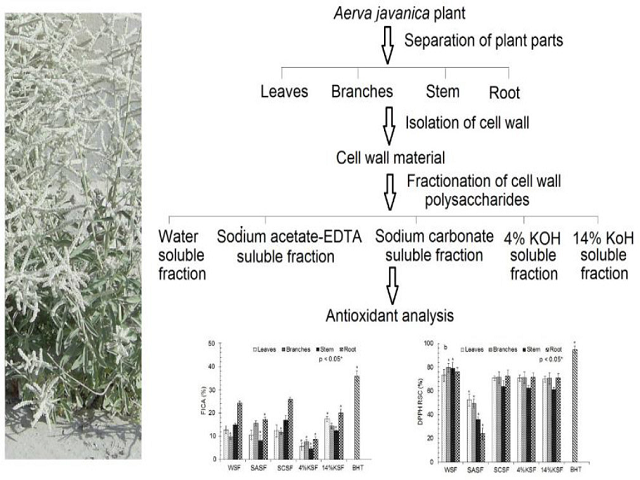Antioxidant Potential of Cell Wall Polysaccharides Extracted from Various Parts of Aerva javanica
DOI:
https://doi.org/10.5530/fra.2019.1.7Keywords:
Aerva javanica, Antioxidant potential, Cell wall polysaccharides, Desert cotton, Free radical scavenging capacity, Lipid peroxidationAbstract
Objectives: Aerva javanica, an underutilized desert plant, is a rich source of polysaccharide but not investigated properly for the antioxidant potential of its polysaccharides. The antioxidant potential of cell wall polysaccharides in leaves, branches, stem and root of A. javanica was determined. Methods: In a sequential extraction procedure, the water-soluble fraction (WSF), sodium acetate-EDTA soluble fraction (SASF), sodium carbonate soluble fraction (SCSF), 4% potassium hydroxide soluble fraction (4%KOHSF) and 14% potassium hydroxide soluble fraction (14%KOHSF) were obtained and subjected to antioxidant analysis. Results: The addition of salt or alkali in the extraction media resulted in a significant increase in total extractable polysaccharide content. The 14%KOHSF showed higher extract yield, total antioxidant activity, ferrous ion chelating activity, ferric reducing antioxidant power and linoleic acid reduction capacity. The WSF showed higher scavenging capacity against DPPH radical. WSF of branches and root and SCSF of leaf and stem showed highest scavenging capacity against hydroxyl radical. Conclusion: The lower extraction yield but high radical scavenging capacity of WSF may be attributed to the presence of some protein linked hydrophilic polysaccharides of pectin nature. The high extractable polysaccharide content with strong antioxidant potential makes A. javanica a suitable candidate for the antioxidant polysaccharide based pharmaceutical and industrial applications.
Downloads
Metrics





